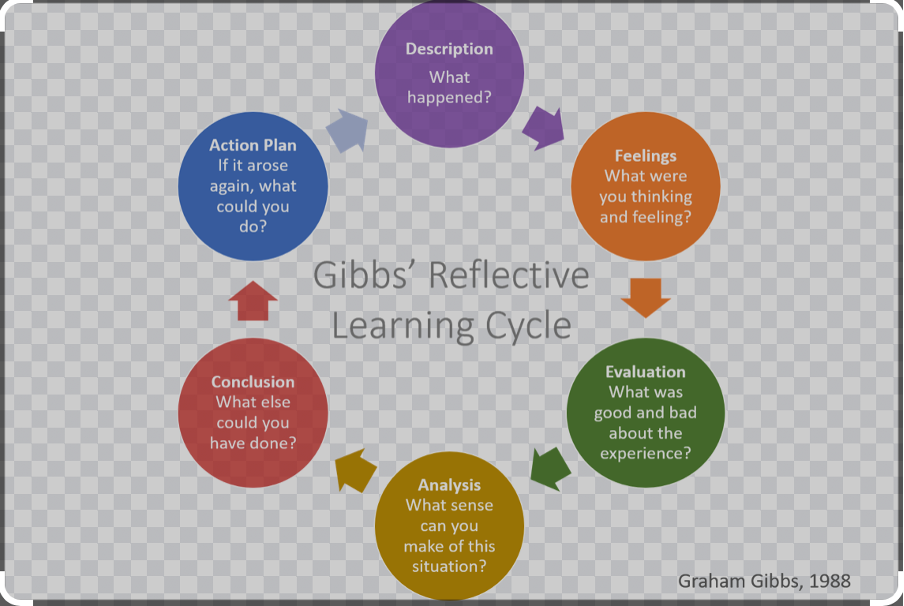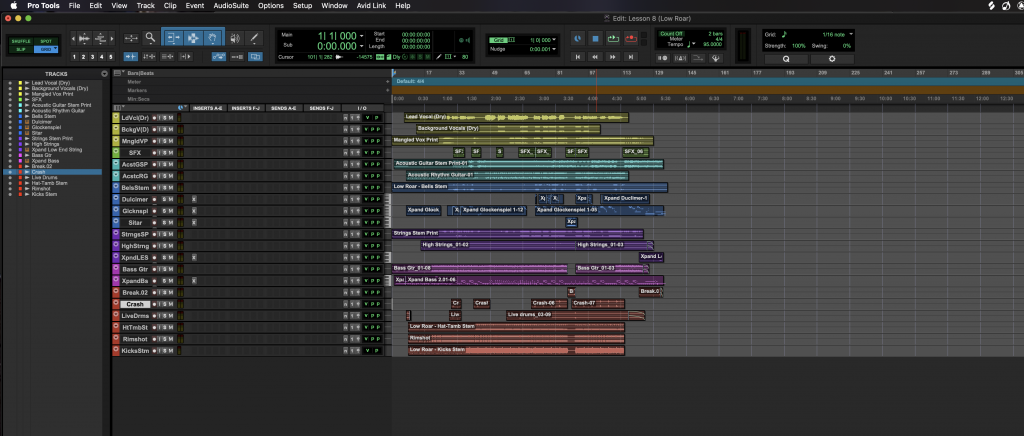Skill Transfer
Reflecting near the end of my work placement I have learned a lot through recording and mixing sessions and had a few challenges along the way. For the most part, it has been the ability to transfer all my Digital Audio Workstation skills from Logic Pro to Pro Tools to improve the speed of my work rate and meet deadlines efficiently in the studio. To describe one of the challenges I had during my work placement and to show how I addressed it, I will use Gibb’s reflective model to structure my writing. (Jasper,2013, p.80)

Description
One of the main challenges I had to address was converting my digital audio workstation skills from Logic Pro to Pro Tools. I had previously been a Logic Pro user for the past 6 years and had only some experience working with the platform “Pro Tools”. When I began work in the studio, I saw how fast my boss was able to navigate when recording bands and doing mixing sessions using the Digital audio workstation and I realised if I wanted to be a professional audio engineer, I would need to transfer my skills across so I can work fast and effectively and maximise my workflow. Firstly, to address this challenge I purchased the “Pro Tools Studio ” software for my home studio. This enabled me to be able to practice learning the different shortcuts at home every evening using multi-tracks that I accessed from the webpage “Mixing Secrets For The Small Studio” and I also used other projects I had in my Logic Pro folder. Moreover, I also practiced setting up microphones through my studio interface for vocal takes and recording my guitars so I could get familiar with Pro Tools I/O settings and audio pathway setup. Secondly, I noted down as many shortcuts as I could from a YouTube tutorial, mainly the ones I would be using at my work placement. After a few weeks, I was able to get the main shortcuts memorized. Thirdly, I signed up for the Avid ‘User’ Certification courses PT101 Pro Tools Fundamentals I and PT110 Pro Tools Fundamentals II. I recently did the PT101 course and passed the exam and I am currently doing the PT110 course, where the exam date is in June. After I pass my Pro Tools user exams, I will be a certified Pro Tools User and I will continue to do another two Avid courses PT201 & PT210M to be certified as a Pro Tools Music Operator.
Feelings
Initially, I felt extremely confident in completing the challenge. I thought that pro tools would be very similar to Logic Pro and it would be quite easy to convert my skills and I thought that I would be a pro in no time. But I soon realised when I started working with many different functions that Pro Tools has compared to Logic Pro that it would take a bit more time than I thought. However, the more I worked with the software in and out of the studio the more I got to know my way around it, and anytime I got stuck, I knew I had the confidence to either check my shortcut notebook or quickly search the internet to fix the problem.

Evaluation and Analysis
Reflecting on my evaluation of the process is that it was good that I was aware of the challenge early. I took the initiative to get up to date with as much as I could before I had to work with a live Pro Tools session in the studio. If I had not gone and got the software and done the things I did to practice and to get up to speed with the software. It would have probably looked bad if I was working with a live session and I would have had to stop and start so many times when I would have to look up how to do shortcut commands for the software.
Conclusion
Overall, I thought I handled the situation well by getting up-to-date with pro tools shortcuts ahead of time, and speeding up my workflow as much as I could before I had a live studio session. Although it took me more time than I thought to transfer my skills from Logic Pro to Pro Tools and I am still learning new shortcuts as it is.
Action Plan
I think I had a good action plan for dealing with the challenge when it occurred. The main thing for my future reference and thing to take away from the experience is for me not to take for granted the time it can take to transfer skills. I can be more prepared for challenges in the future.
Bibliography
Jasper, M. (2013) Beginning reflective practice.Melbourne & London: Cengage Learning.
You May Also Like

Interview a New You! – Becoming an Interview Guru
24 February 2023
Job Interviews: Selling Yourself For A Pay Cheque
24 February 2023
